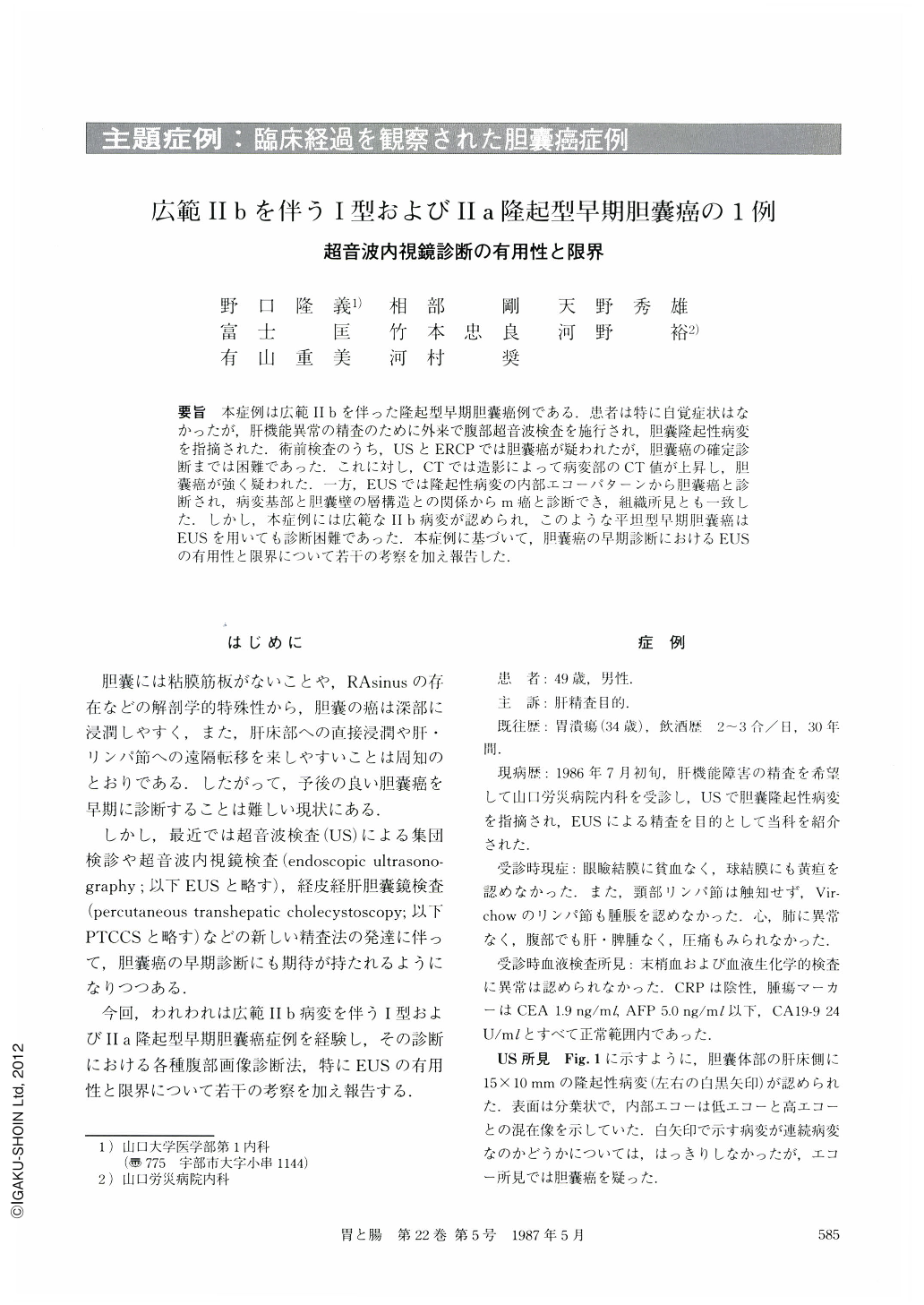Japanese
English
- 有料閲覧
- Abstract 文献概要
- 1ページ目 Look Inside
要旨 本症例は広範Ⅱbを伴った隆起型早期胆囊癌例である.患者は特に自覚症状はなかったが,肝機能異常の精査のために外来で腹部超音波検査を施行され,胆囊隆起性病変を指摘された.術前検査のうち,USとERCPでは胆囊癌が疑われたが,胆囊癌の確定診断までは困難であった.これに対し,CTでは造影によって病変部のCT値が上昇し,胆囊癌が強く疑われた.一方,EUSでは隆起性病変の内部エコーパターンから胆囊癌と診断され,病変基部と胆囊壁の層構造との関係からm癌と診断でき,組織所見とも一致した.しかし,本症例には広範なⅡb病変が認められ,このような平坦型早期胆囊癌はEUSを用いても診断困難であった.本症例に基づいて,胆囊癌の早期診断におけるEUSの有用性と限界について若干の考察を加え報告した.
The patient had no symptoms but visited the clinic of our hospital, wishing to undergo further examination of the liver. There were no abnormalities in the blood chemistry, and no morphological changes of the liver were revealed by conventional ultrasonography (US). However, an elevated lesion was detected in the gallbladder by US, and a gallbladder carcinoma was suspected.
The same elevated lesion accompanied with a small polypoid lesion was demonstrated by ERCP, but definite diagnosis of gallbladder carcinoma could not be made by ERCP. In enhanced CT, the main lesion was visualized as a high density area and a carcinoma was strongly suspected.
In contrast to findings by these diagnostic procedures, not only the main lesion but some small polypoid lesions could be demonstrated very clearly by endoscopic ultrasonography (EUS). And, on the basis of the difference of the internal echo pattern of these lesions, gallbladder carcinoma was able to be diagnosed by EUS. Furthermore, the depth of the invasion of these lesions was able to be diagnosed as limited to the mucosa. This was possible because the layer structure of the gallbladder wall, which was visualized by EUS, was intact at the places where these lesions were discovered.
A large elevated lesion (type Ⅰ) with some small polypoid lesions (type Ⅱa) was seen in the resected gallbladder after operation. Pathological examination confirmed our suspicion that all of these lesions were carcinoma with invasion only of the mucosa. However, at the same time, the broad flat cancerous lesions (type Ⅱb) with mucosal invation were pointed out around these elevated lesions.
In conclusion, EUS was highly evaluated as the best diagnostic procedure to detect the elevated type early gallbladder carcinoma, but it is thought to be incapable of diagnosing the flat type early carcinoma in the gallbladder.

Copyright © 1987, Igaku-Shoin Ltd. All rights reserved.


